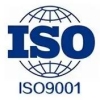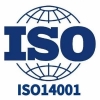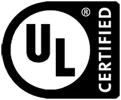4D millimeter wave radar is one of the core sensors in the system

A few days ago, Tesla, represented by the "pure vision" solution, silently picked up the millimeter wave radar. According to the exposure of the new file, it can be seen that the number is "1541584" millimeter wave radar once again on Tesla, some people speculate that this is a high resolution of 4. Because of this, 4D Lidar is considered millimeter-wave radar.
"Autonomous driving" has been a hot topic for the past few years and even the future.
In the process of transforming from "electrification" to "intelligence", autonomous driving technology has become a new variable in the development of the automobile industry, and the penetration rate of autonomous driving in China's automobile industry is also increasing steadily.
As we all know, perception in the field of autonomous driving is very important. The realization of autonomous vehicle perception cannot be achieved without a variety of sensor equipment, including laser radar, millimeter-wave radar, on-board camera, infrared thermal imaging, ultrasonic radar, etc., through capturing and sensing the traffic environment data around the vehicle, providing accurate information for autonomous driving, planning the correct traffic route, so that the autonomous vehicle can drive safely.
Currently, with the increasing demand for autonomous driving capabilities in the market,sensor equipment needs higher sensing capabilities. As a result, companies are rubbing elbows with each other, working on chips, systems, perception, algorithms and other areas. Among these fields, 4D as a new star, millimeter wave radar seems to have become one of the indispensable configurations in the field of autonomous vehicles, and is even referred to as the "parallel" of Lidar.
Especially in CES this year, the 4D imaging millimeter wave radar was a huge trend. For example, NXP, TI and Mobileye all launched or updated their own imaging radar schemes one after another. Millimeter wave radar system manufacturers Arbe, Zadar Labs and Smartmicro also brought their own imaging radar products.
So why is 4D millimeter wave radar called the "parallel" of Lidar? What's the advantage? What can it bring to autonomous driving? Now what enterprises are in the layout of 4D millimeter wave radar market?
What are the advantages of 4D millimeter wave radar?
Those who know autopilot well know that the perception solution in the field of autopilot is divided into two camps. One camp is represented by Tesla, which mainly uses camera as the main sensor to collect perception data. The other is a "combined sensor" camp, using sensors such as cameras, millimeter-wave radar, fusion sensing Lidar and so on.
A few days ago, Tesla, represented by the "pure vision" solution, silently picked up the millimeter wave radar. According to the exposure of the new file, it can be seen that the number is "1541584" millimeter wave radar once again on Tesla, some people speculate that this is a high resolution of 4. D imaging radar, first announced in mid-January.
Why is millimeter-wave radar becoming more and more popular among car sensors and becoming the "new star"? As is known to all, for a long time, 3D millimeter wave radar has a shortcoming, that is, unable to identify stationary objects, manhole covers on the road, speed bumps and hanging a variety of road signs, due to the absence of height information, 3D millimeter wave radar completely unable to make decisions, resulting in 3D automatic driving battlefield, millimeter wave radar has been very common.
Compared with traditional millimeter-wave radar, millimeter-wave radar is also known as imaging radar. Besides calculating the distance between measured targets, 4D can also calculate the pitch Angle information of measured targets, obtain the height information of measured targets, and better understand and draw the map of the environment around the car. To make the data it provides more accurate.
In addition, the 4D millimeter wave radar has the advantage of high resolution. In complex urban environments, the environment around the car can be perceived by high-resolution point clouds, thus enhancing the ability of environmental mapping and scene perception, which to some extent increases the shortcoming of 3D millimeter wave radar.
In addition, compared with lidar, 4D millimeter wave radar can work all day even in heavy snow. Heavy rain and other extreme weather still does not have a large deviation, can play a stable role, not affected by adverse weather conditions. At the same time, in terms of cost, the price of lidar is around $1,000, while 4. D millimeter wave radar is only about 1/10 of Lidar. Because of this, 4D Lidar is considered to be the "parallel" of millimeter-wave radar.
The market size is expected to exceed $3.5 billion
4D millimeter wave radar has lower cost advantages than lidar in the field of autonomous driving and more incomparable performance than traditional millimeter wave radar, thus attracting many players to enter the game and bet 4. D millimeter-wave radar, the 4D millimeter-wave radar circuit is already crowded.
It is understood that 4D2019, millimeter-wave radar was first released by the Israeli company. Phoenix by Arbe. Subsequently, international technology giants such as Waymo, Continental Group, ZF, Ambofu and Bosch also began to announce the relevant developments of 4D millimeter wave radar.
Naturally, many domestic enterprises are also making efforts one after another. Huawei, Huanyu Automobile, Anzhijie, Suzhou millimeter Wave, Furuizhong and other enterprises have made relevant layout in the field of 4D millimeter wave radar. In addition, Chuhang Technology, Nava Electronics, Sentek, Muniu Technology, Geometry Partners and other companies are also in the layout, but the specific time of mass production has not been announced.
In addition, the car company is also accelerating 4D ground-to-ground millimeter wave radar. Zf 4D SAIC Feifan millimeter wave Radar R is equipped with Sentek 47 and D Changan Deep Blue's brand new automotive millimeter wave radar SL03, both of which have officially begun delivery; Beijing Automotive Group has also invested in Arbe and is expected to carry Arbe's mass-produced 4D millimeter wave radar products.
In this sense, 4D millimeter wave radar has entered the stage of small-scale mass production, which may bring new opportunities for autonomous driving in the future, and its penetration rate will gradually increase. According to industry forecasts, the global market size of millimeter wave radar is expected to reach 3.5 billion dollars in 4D2027.
In addition, China International Capital Corporation also believes that 4D millimeter wave radar can improve the performance of millimeter wave radar in an all-round way, which is expected to make millimeter wave radar become an important direction of the future development of ADAS millimeter wave radar and one of the core sensors in the system. It is predicted that by 2025, the size of China's automotive 4D imaging radar market is expected to reach $190 million, $360 million and $540 million respectively, and the 2022E-25E CAGR is expected to reach 34%, 64% and 88% respectively.
There are still challenges and the road to revolution needs to continue
Although it now appears that 4D millimeter wave radar is becoming available to various automobile manufacturers. But many challenges remain in its development.
Industry insiders pointed out that 4D added chips mainly rely on imaging millimeter-wave radar and stereo imaging hardware, such as antennas. Improve angular resolution and other functions, but at the same time because of too many antennas caused by mutual interference, noise.
In addition, from the perspective of resolution, the horizontal Angle resolution of 4D millimeter wave radar is mostly 1°, while the horizontal Angle resolution of Lidar can reach 0.1°. 4D millimeter wave radar can only achieve some low-end lidar effects. Therefore, to some extent, 4D millimeter wave radar cannot completely replace Lidar. We can only say that the two are complementary and each has its own advantages and disadvantages. The market also needs to consider the future development of both.
In addition, for automobile manufacturers, 4D imaging millimeter wave radar has not yet entered the real mass production stage. Not all players are willing to take the plunge and start at short notice, but they still have a wait-and-see attitude. In addition, it is not ruled out that future lidar upgrades and updates may no longer be limited to high development costs.
In the future, it can only be said that 4D millimeter wave radar is one of the development trends. Its core also needs to pay attention to product performance and price, which also needs certain investment and attention from the industry.
Write at the end
Today, in the development of smart cars, autonomous driving isn't really happening. Whether it is Lidar or 4D millimeter wave radar, opportunities and challenges coexist in the development of autonomous vehicles, and there are many possibilities in the future. Now, along with the influence of 4D millimeter wave radar is gradually expanding, which actually brings new development opportunities for autonomous driving. How to better apply to the automobile industry, the industry needs more attention and investment, as well as the market brought further verification.
Die Produkte, an denen Sie interessiert sein könnten
 |
TPCM-2.4-5 | CMC 2.41MH 5A 2LN TH | 6894 More on Order |
 |
AA53002-015 | XFRMR TOROIDAL 300VA CHAS MOUNT | 8352 More on Order |
 |
62045-P2S02 | XFRMR TOROIDAL 10VA CHAS MOUNT | 2430 More on Order |
 |
62044-P2S02 | XFRMR TOROIDAL 10VA CHAS MOUNT | 6048 More on Order |
 |
62035-P2S02 | XFRMR TOROIDAL 7VA CHAS MOUNT | 6642 More on Order |
 |
62025-P2S02 | XFRMR TOROIDAL 5VA CHAS MOUNT | 3924 More on Order |
 |
62021-P2S02 | XFRMR TOROIDAL 5VA CHAS MOUNT | 5058 More on Order |
 |
62012-P2S02 | XFRMR TOROIDAL 3.2VA CHAS MOUNT | 3204 More on Order |
 |
70074K | XFRMR TOROIDAL 35VA THRU HOLE | 6840 More on Order |
 |
70072K | XFRMR TOROIDAL 35VA THRU HOLE | 5634 More on Order |
 |
70054K | XFRMR TOROIDAL 15VA THRU HOLE | 4716 More on Order |
 |
70043K | XFRMR TOROIDAL 10VA THRU HOLE | 5562 More on Order |
 |
70031K | XFRMR TOROIDAL 7VA THRU HOLE | 8658 More on Order |
 |
70014K | XFRMR TOROIDAL 3.2VA THRU HOLE | 5562 More on Order |
 |
70013K | XFRMR TOROIDAL 3.2VA THRU HOLE | 4392 More on Order |
 |
70011K | XFRMR TOROIDAL 3.2VA THRU HOLE | 7560 More on Order |
 |
62015-P2S02 | XFRMR TOROIDAL 3.2VA CHAS MOUNT | 3780 More on Order |
 |
70025K | XFRMR TOROIDAL 5VA THRU HOLE | 4068 More on Order |
 |
62082-P2S02 | XFRMR TOROIDAL 50VA CHAS MOUNT | 4986 More on Order |
 |
62024-P2S02 | XFRMR TOROIDAL 5VA CHAS MOUNT | 4824 More on Order |
 |
62084-P2S02 | XFRMR TOROIDAL 50VA CHAS MOUNT | 7284 More on Order |
 |
62060-P2S02 | XFRMR TOROIDAL 25VA CHAS MOUNT | 23778 More on Order |
 |
70005K | XFRMR TOROIDAL 1.6VA THRU HOLE | 7218 More on Order |
 |
AC1025 | TRANSFORMER CURRENT 25.0 AMP | 4230 More on Order |









